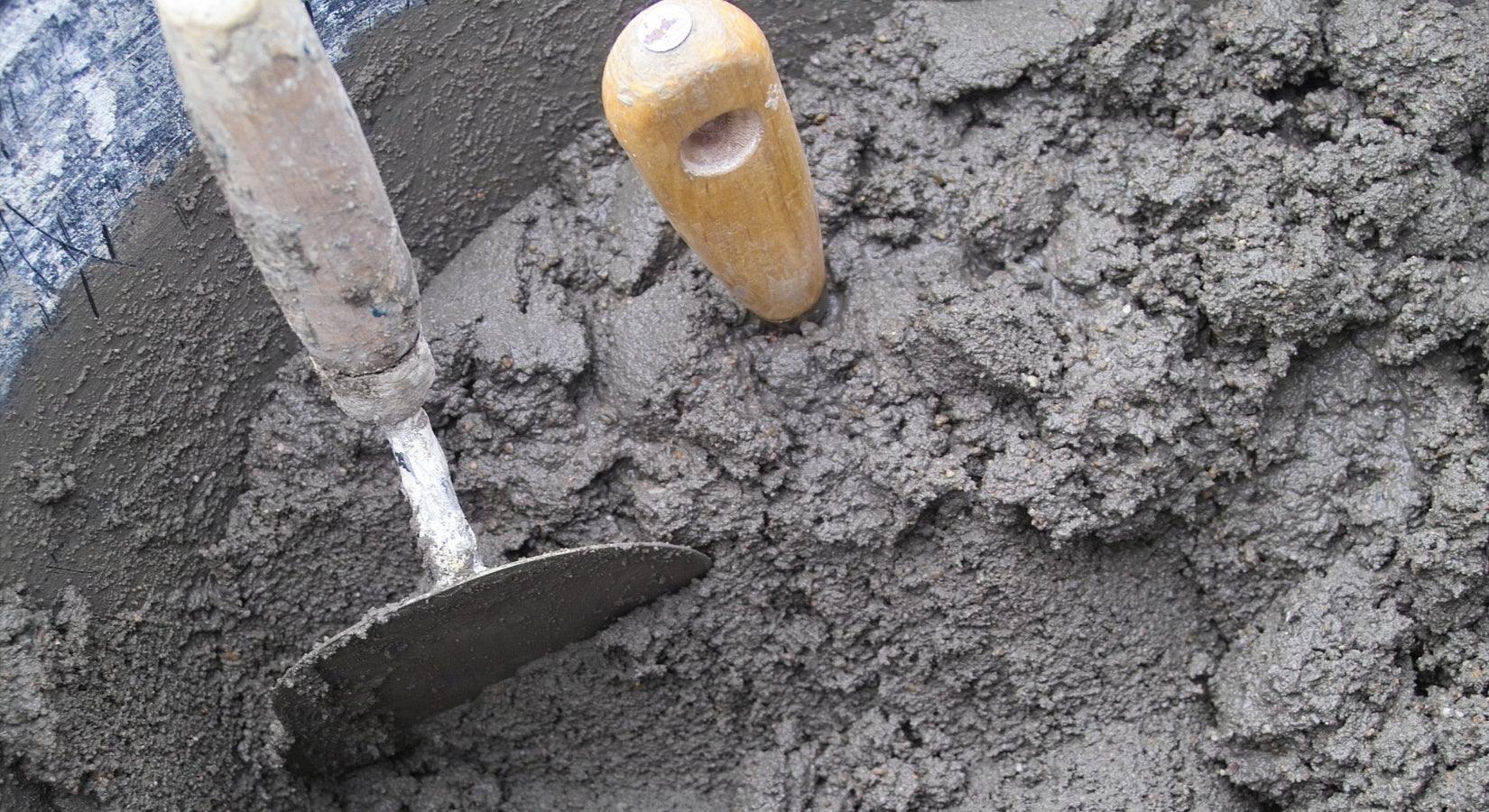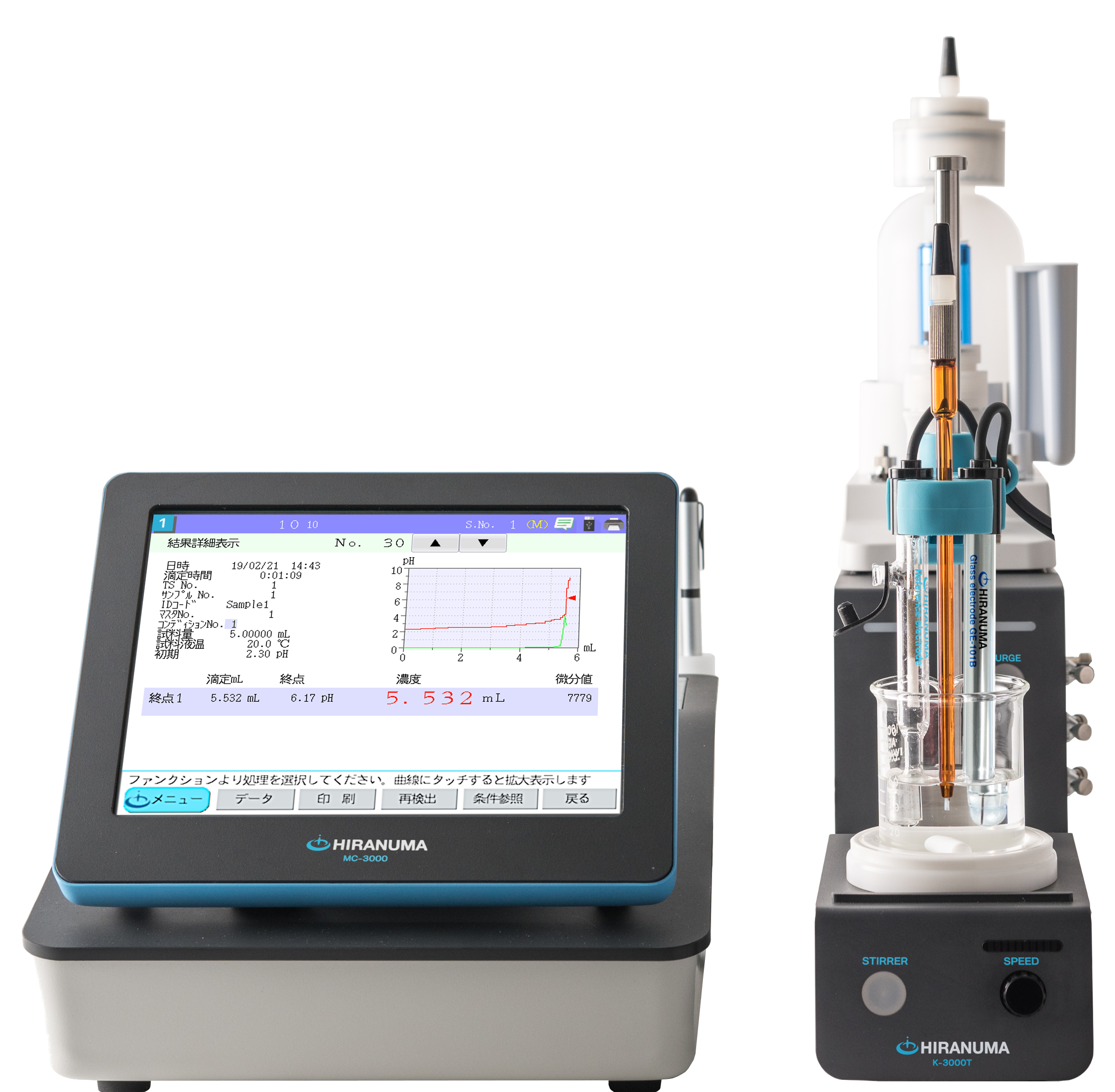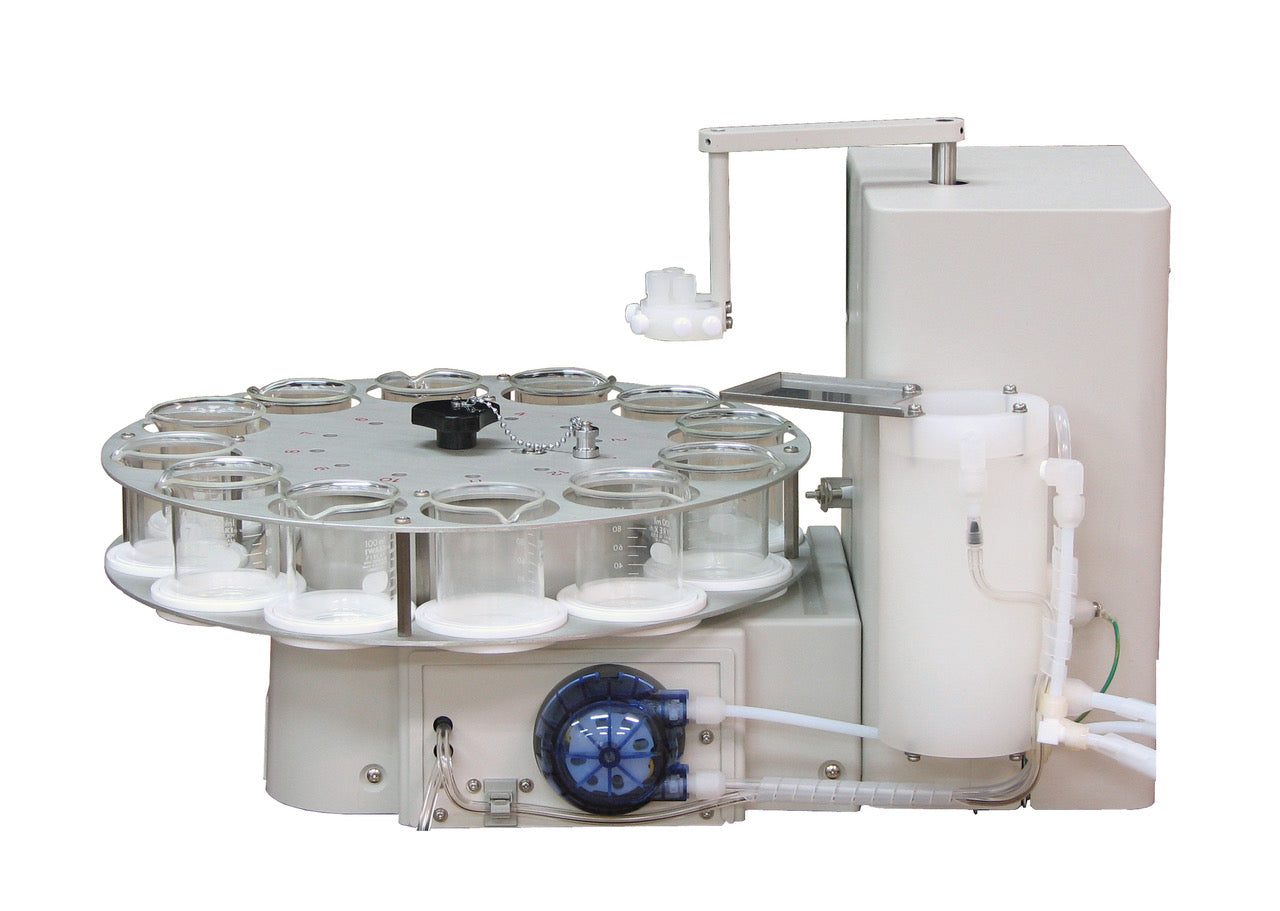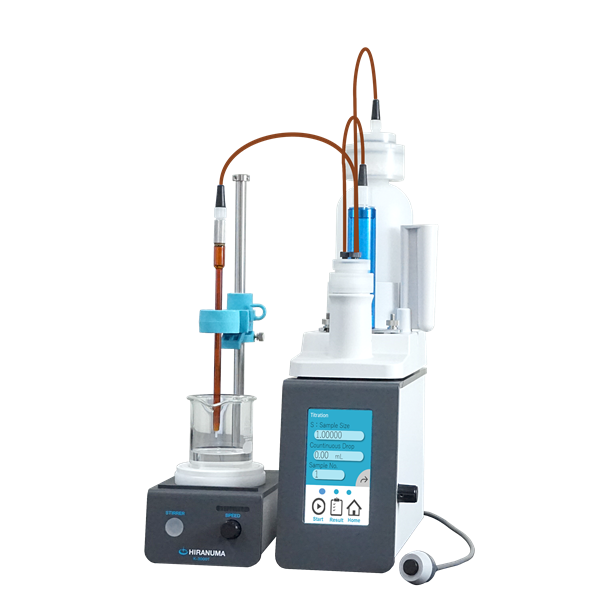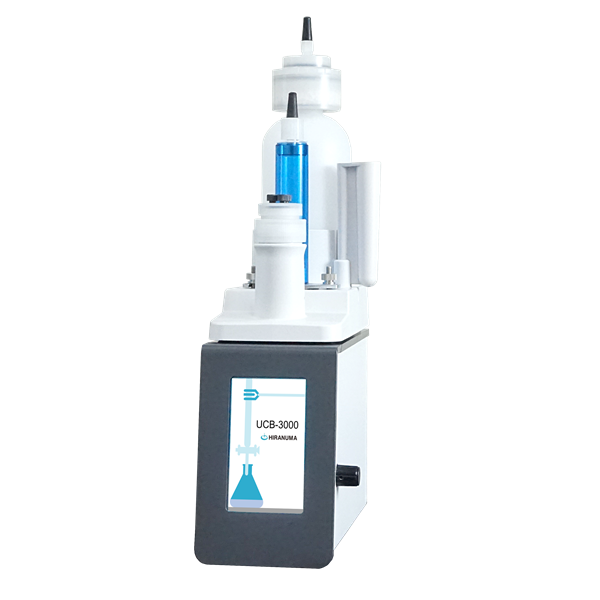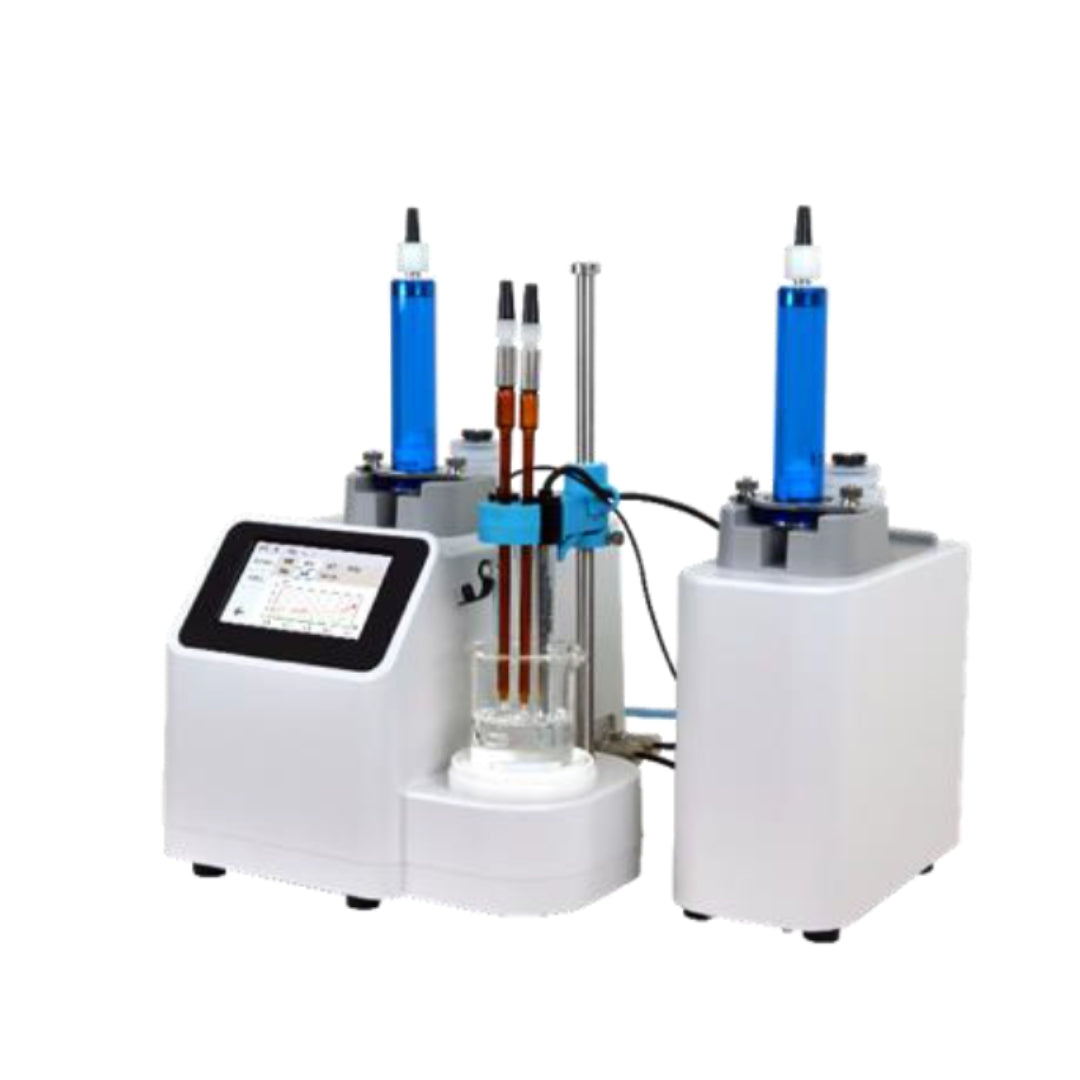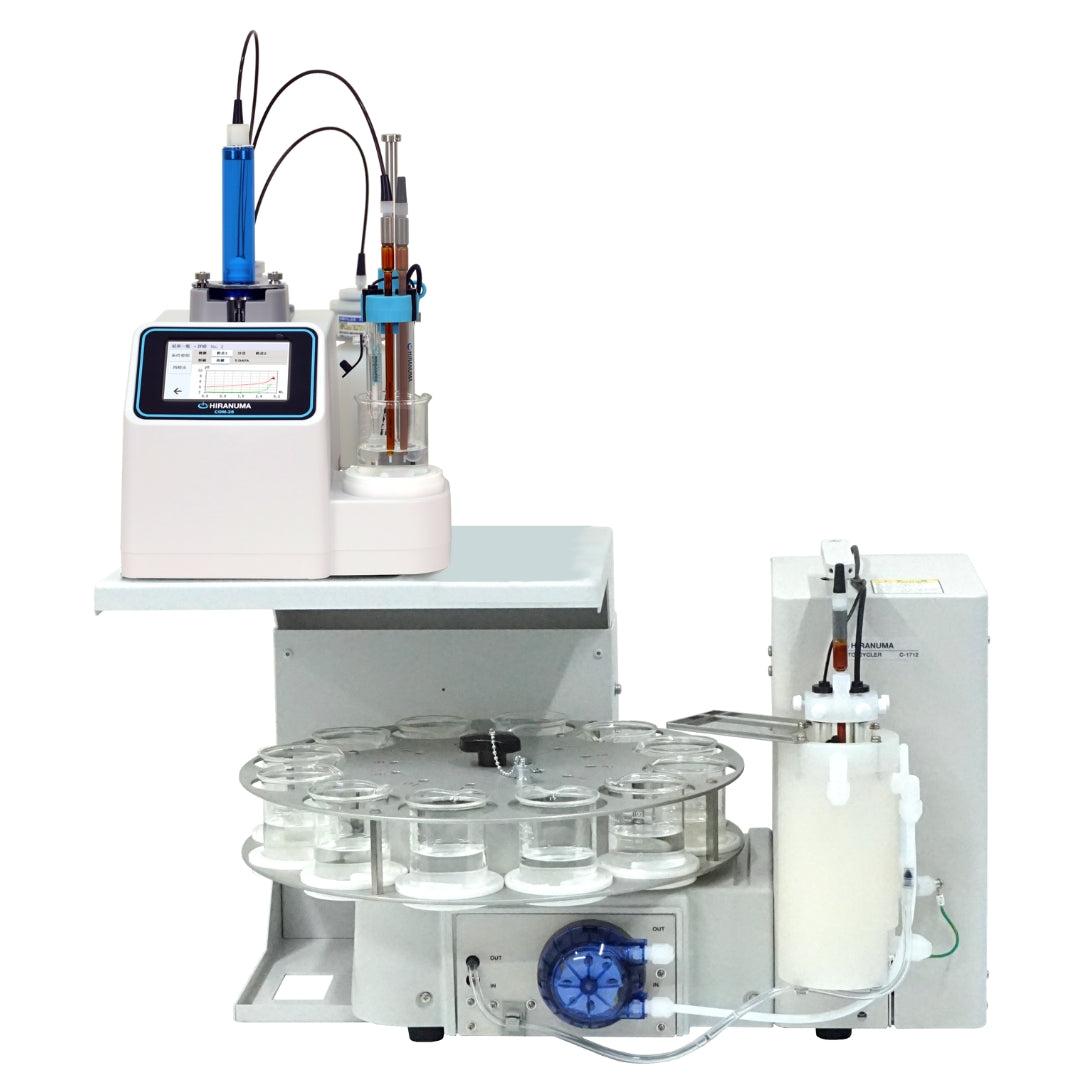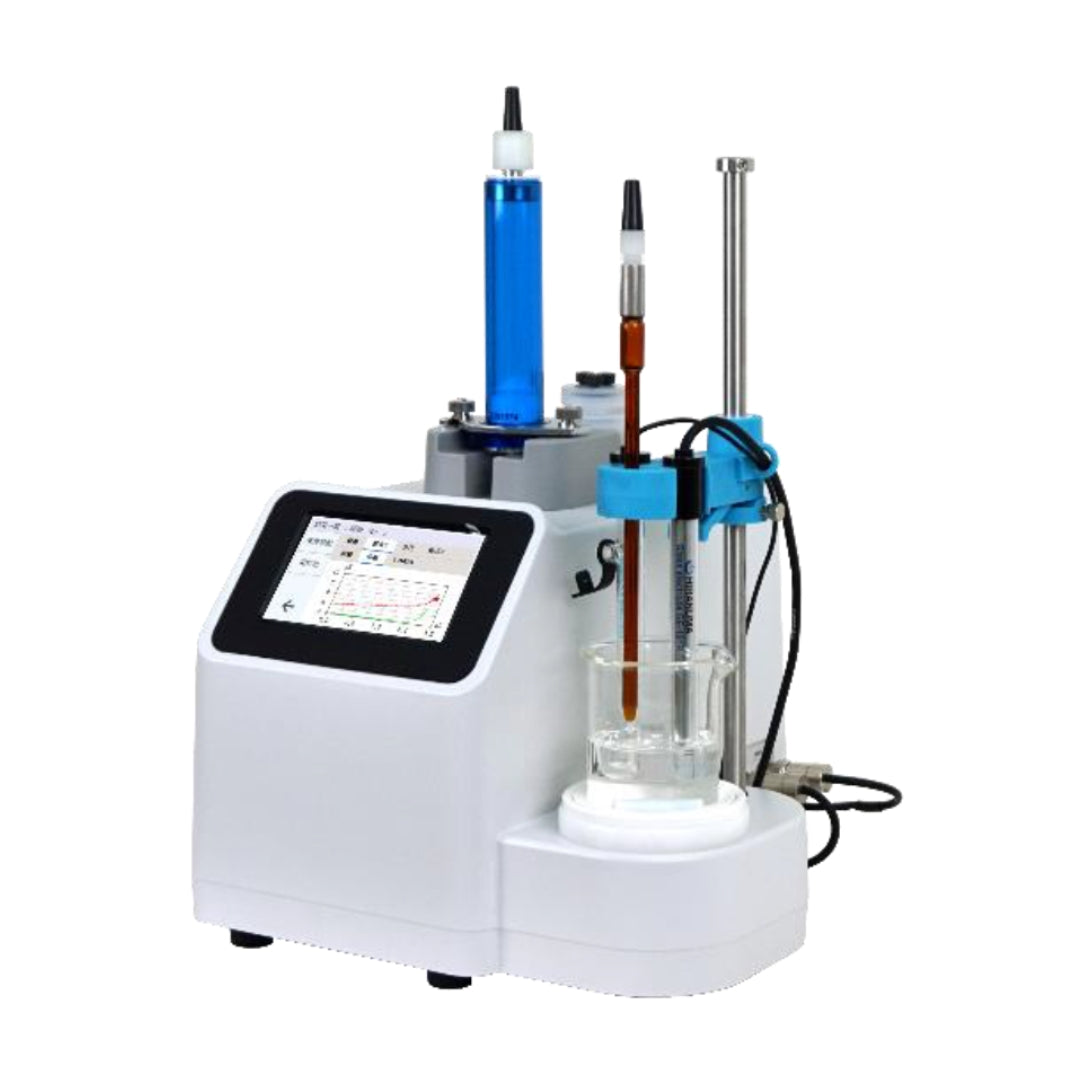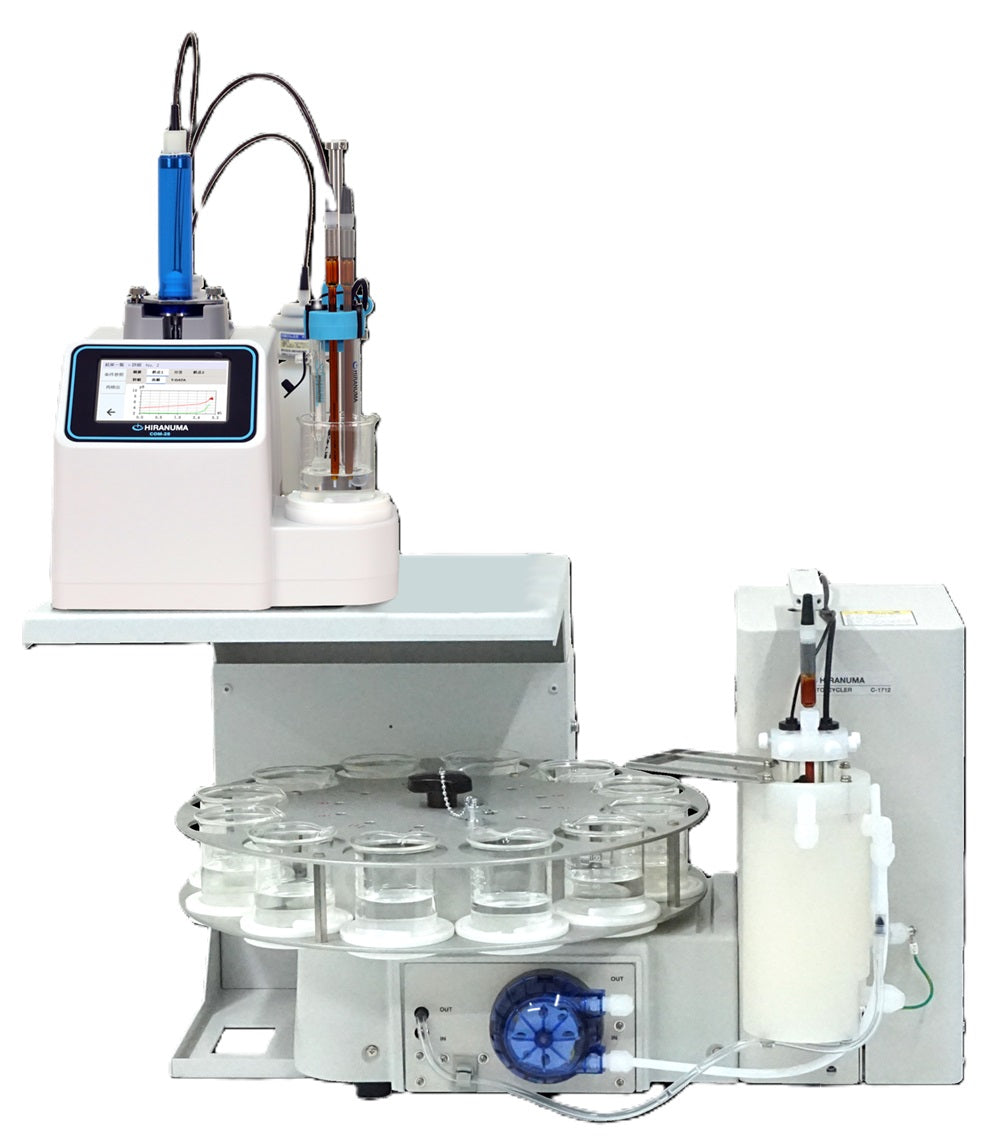| HIRANUMA APPLICATION DATA | Automatic Titrator | Data No. | N1 | Feb. 10,2021 |
| Cement Concrete | Determination of chloride ion in cement |
1. Abstract
This report introduces an example of the determination of chloride ion in cement.
This measurement method is described in “Method for measuring chloride” of “Japanese industrial standard JIS R 5202 Method for chemical analysis of cements”. The sample is dissolved in nitric acid, a chloride ion standard solution and a hydrogen peroxide solution are added, and the sample is heat-treated, and then the measurement is performed by precipitation titration using a silver nitrate standard solution. The measurements are made by potentiometric titration using a chloride ion-selective electrode as the electrode for end point detection.
| Cl⁻ + AgNO₃ → AgCl + NO₃⁻ |
2. Configuration of instruments and Reagents
| (1) | Configuration | ||
| Main unit | : | Automatic Titrator COM series | |
| Electrode | : | Chloride ion-selective electrode CLi-081 (Connect to IE-2) Reference electrode MS-231Z (Connect to RE-2) *Remark The general reference electrode (RE-201Z) cannot be used for this titration because KCl inner solution might come out to sample solution and it causes measurement error. The inner electrodes of MS-231Z use mercury (I) sulfate. When these electrodes are disposed, please ask the specialized industrial waste disposal operator. |
|
| (2) | Reagents | ||
| Titrant | : | 0.005 mol/L Silver nitrate standard solution | |
| Additive | : | Nitric acid (60 %, density 1.38 g/mL) Hydrogen peroxide (Approx. 30 %) 0.005 mol/L Chloride ion standard solution |
|
3. Measurement procedure
| (1) | Take 5 g of sample into a 200 mL beaker and accurately weigh it. |
| (2) | Add about 20 mL of DI water. Then add 12 mL of nitric acid with stirring to dissolve the sample. |
| (3) | Add warm DI water to make 100 mL sample solution. |
| (4) | Add 2 mL of chloride ion standard solution with volumetric pipette. |
| (5) | Add 2 mL of 30 % hydrogen peroxide. |
| (6) | Cover the beaker with watch glass and heat to boil for 1-2 minute. Then cool it to room temperature. |
| (7) | Immerse electrodes and titrate with 0.005 mol/L silver nitrate standard solution. |
| (8) | As blank test, take 2 mL of 0.005 mol/L chloride ion standard solution exactly in a 200 mL beaker, add warm DI water to make 100 mL, and perform procedure (6) and (7). |
4. Measurement conditions and results
Examples of titration conditions
(1) Measurement of blank
| Cndt No. | 1 | |
| Method | Auto | |
| Buret No. | 1 | |
| Amp No. | 2 | |
| D. Unit | mV | |
| S-Timer | 5 | sec |
| C.P. mL | 0 | mL |
| T Timer | 0 | sec |
| D.P. mL | 0.2 | mL |
| End Sens | 200 | |
| Over mL | 0.5 | mL |
| Max Vol. | 20 | mL |
| Constant No. | 6 | |
| Size | 0 | g |
| Blank | 0 | mL |
| Molarity | 0.005 | mol/L |
| Factor | 1.001 | |
| K | 0 | |
| L | 0 | |
| Unit | mL | |
| Formula | ||
| D | ||
| Decimal Places | 3 | |
| Mode No. | 20 | |
| Pre Int | 0 | sec |
| Del K | 2 | |
| Del Sens | 0 | mV |
| Int Time | 5 | sec |
| Int Sens | 3 | mV |
| Brt Speed | 2 | |
| Pulse | 80 |
(2) Measurement of sample
| Cndt No. | 2 | |
| Method | Auto | |
| Buret No. | 1 | |
| Amp No. | 2 | |
| D. Unit | mV | |
| S-Timer | 5 | sec |
| C.P. mL | 0 | mL |
| T Timer | 0 | sec |
| D.P. mL | 0.1 | mL |
| End Sens | 150 | |
| Over mL | 0.5 | mL |
| Max Vol. | 20 | mL |
| Constant No. | 7 | |
| Size | 5.0233 | g |
| Blank | 2.062 | mL |
| Molarity | 0.005 | mol/L |
| Factor | 1.001 | |
| K | 0 | |
| L | 0 | |
| Unit | % | |
| Formula | ||
|
(D-B)*F*0.01773/S
|
||
| Decimal Places | 4 | |
| Mode No. | 20 | |
| Pre Int | 0 | sec |
| Del K | 2 | |
| Del Sens | 0 | mV |
| Int Time | 5 | sec |
| Int Sens | 3 | mV |
| Brt Speed | 2 | |
| Pulse | 80 |
Measurement results
| Sample | Number of measurement |
Sample Size(g) |
Titration volume (mL) |
Chloride ion(%) | Statistical Calculation |
|
|---|---|---|---|---|---|---|
| BLANK | 1 | 2.055 | Avg. | 2.062 mL | ||
| 2 | – | 2.078 | – | SD | 0.014 mL | |
| 3 | 2.052 | RSD | 0.69 % | |||
| SAMPLE | 1 | 5.0098 | 6.749 | 0.0166 | Avg. | 0.0168 % |
| 2 | 5.0152 | 6.825 | 0.0169 | SD | 0.0002 % | |
| 3 | 5.0233 | 6.836 | 0.0169 | RSD | 1.03 % | |
Examples of measurement curves
 |
 |
| Measurement of blank | Measurement of sample |
5. Note
・Indicator electrode
Chloride ion-selective electrode was used as an indicator electrode for this measurement.
In addition to the above electrode, a silver electrode coated with silver chloride (model: AG-311A) can also be used for this measurement. However, since the silver electrode coated with silver chloride deteriorates after long-term use, the electrode potential change near the end point becomes small and unclear. On the other hand, the chloride ion-selective electrode has the advantage that when the sensitivity deteriorates, the sensitivity can be easily restored by lightly polishing the sensitive membrane with a sandpaper.
Keywords: Chloride ion, Precipitation titration, Cement, JIS R5202
*Some measurement would not be possible depending on optional configuration of system.

